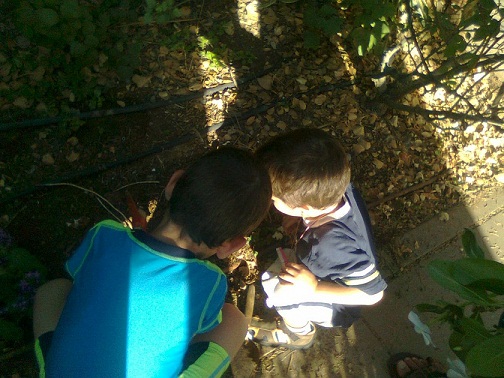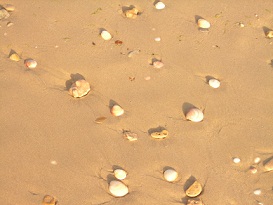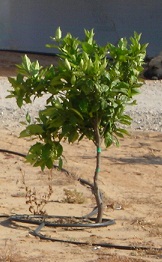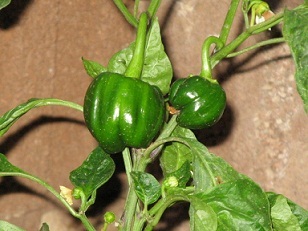Text and photos by Toby Klein Greenwald
April 22 is Earth Day. But just the fact that it has a special day designated for it reminds me of how, when we were children, I asked my mother, "Why is there a Mother's Day and a Father's Day, but no Children's Day?" and she replied, "Because every day is Children's Day!"
Every day should be a day in our lives that we walk outside (or at least look out a window!) and appreciate a world with a sky that never gets boring, shades of green as numerous as the stars, rivers and ponds and oceans, mountains and valleys and forests…
And in that thankfulness should be embedded a prayer that the earth and all its components bring us only joy and fruitfulness, never destruction.
What can we do? So much destruction comes from man himself.
In this day and age, when children are glued more than ever to computers and the TV, when more of them have surfed with an iPod than on a wave, how can we reintroduce them to the earth and help them learn to love it?
By binding with them in the process. What you do and how you do it will depend of course on their age.
1. START CLOSE TO HOME. INTRODUCE YOUR CHILDREN TO YOUR GARDEN, or – if you live in an apartment – the grassy park around the corner. Show them how to sink their hands into the dirt and rub it around in their fingers, discovering the rich feeling of soil, little pebbles, the difference in moisture. If they get lucky, they may find an earthworm or two! Help them start a collection of different sizes, shapes and colors of rocks. Let them sink their feet into the soil as well. A friend of mine, a Reiki master, told me once to walk barefoot on grass for relaxation. Do it with your child and relax together

2. SHOW THEM THE SKY AT NIGHT. You may have to drive a little out of your neighborhood, to an area not doused in streetlamps. Point out the constellations. The Greeks were the first to give them names, but ask them what they see in the shapes and patterns. Print out copies of the constellations and have them connect the dots and create pictures from them in their own way. Maybe you'll get luck and see a falling star. Pay a visit to the local planetarium. This can also be quiet time for you to talk about whatever they want to.
3. WALK BAREFOOT ON THE BEACH. Yes, of course we walk barefoot to get to the water, but I mean do it with meaning! Take your child's hand and concentrate on every step. Walk close to the water and watch as it fills in their little footsteps and then washes away the imprint. Sink your hands into the sand and ask them how it feels different from the soil in your garden. Does is pack the same? Fall through their fingers? Walk into the shallow water and stand there with them and feel the pull of the current, the wet sand beneath your feet and around your toes. Collect sea shells with them to add to the shelf, next to the pebble collection. 
4. PLANT WITH THEM. It can be in a window box, or a little patch of garden. Flowers, veggies, whatever is their pleasure. I still remember with fond affection going outside to clip some tomatoes from my father's tomato plants for our dinner, and filling a vase with my mother's roses. In their daily lives, my father was a sales director and my mother managed a cable TV company, but they connected with the earth on the weekends and evenings. What you grow yourself is always more tasty and beautiful to you. Consult with your children about what to plant and let them help you do it. 
5. ENJOY THE SEASONS TOGETHER. In the autumn, jump into the crispy leaves with them before raking them up. In the winter, make snow angels and snow people with them. Freeze some clean snow so you can make snow cones to eat the following summer. Share textures with them throughout the year, for tactile enjoyment – soil, sand, leaves, petals, snow – and translate it into art. For young ones, help them cut snowflakes from folded paper and decorate them with sparkles. Older kids can be introduced to the art of ice sculpture.
6. SHOW THEM HOW TO RECYCLE. Whether water, peels, bottles or last year's outgrown clothes that are donated, share your recycling efforts with them. If your community has personal recycling bins at peoples' homes, let them fill them. If you have to drive to a recycling center, take them with you. Encourage them to think of creative ways to reuse paper, worn down crayons, or that old kitchen pot...er plastic.
7. TEACH THEM ABOUT SUBSTANCES THAT ARE DANGEROUS TO THE EARTH AND ITS CREATURES, like pesticides, aerosols, styrofoam, and other substances that are dangerous to the earth. If they go with you to the supermarket, explain to them why you're choosing organic over regular produce, free-range chickens and eggs, and a paper bag over plastic.

8. MOST OF ALL – LOVE IT YOURSELF. Like with everything in life, children learn the most by personal example. If you are a person who plants, swims, hikes, star-gazes, lies on your back at the beach and looks at the sky, composts or recycles, they will feel your connection to the world in which we live and they will want to love it, too, and they will learn that even if we can't do it all, we do what we can.

Painting by Mike B. Klein
Happy Earth Day!




